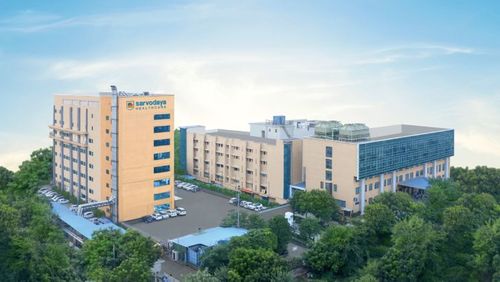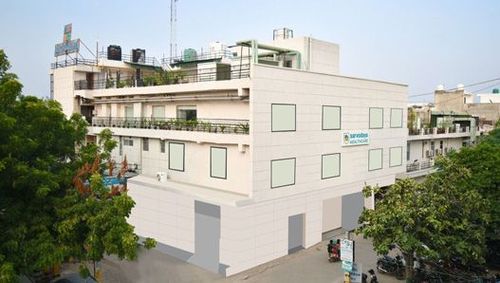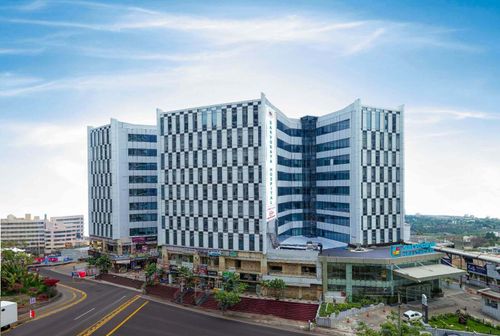Overview
Arthroscopy is a minimally invasive surgical technique used to diagnose and treat joint problems affecting the knee, shoulder, hip, ankle, wrist, and elbow. At Sarvodaya Hospital’s Centre for Orthopaedics and Arthroscopy, our experts perform precision-guided arthroscopy to manage ligament injuries, cartilage tears, joint impingements, and instability.
Using a small camera (arthroscope) and specialised tools, procedures are done through tiny incisions, ensuring faster recovery, minimal pain, and lower infection risks. As a trusted Joint Surgery Hospital in Faridabad, Delhi NCR, we combine accurate diagnostics with advanced surgical care for optimal joint function restoration.
Why is Arthroscopy Surgery For Joint Injuries Required?
Arthroscopy is recommended when conservative treatments like medication, physiotherapy, or injections fail to relieve persistent joint pain or restore normal function.
This advanced procedure is particularly effective for treating torn ligaments such as ACL or PCL injuries, meniscus tears, damaged cartilage, and recurrent joint dislocations.
Conditions like shoulder impingement, rotator cuff tears, synovitis (joint lining inflammation), or loose bone/cartilage fragments also benefit significantly from arthroscopy surgery for joint injuries.
At Sarvodaya Hospital, our orthopaedic team uses arthroscopy not only for precise diagnosis but also for targeted corrective treatment, ensuring faster recovery and improved joint mobility through minimally invasive expertise.
Procedure for Arthroscopy Surgery For Joint Injuries
At Sarvodaya, arthroscopy begins with a detailed clinical examination, followed by imaging tests like MRI or X-ray to understand the extent of joint damage. Patients undergo anaesthesia clearance and pre-surgical counselling.
During the procedure, our orthopaedic specialists use a minimally invasive approach, making small incisions to insert an arthroscope (camera) and specialised micro-instruments.
The high-definition visual feed allows real-time inspection and treatment of the joint interior. Based on the diagnosis, the surgeon may repair torn cartilage, reconstruct ligaments, or remove inflamed tissue with precision, all without open surgery.
After surgery, patients are kept under brief observation, and pain management with early mobilisation begins soon after. The procedure is backed by advanced infrastructure, ensuring patient safety and optimal recovery outcomes.
Benefits of Arthroscopy Surgery For Joint Injuries
Arthroscopy offers a safer, faster, and more precise treatment option for various joint conditions. Its minimally invasive nature ensures minimal disruption to surrounding tissues and a quicker return to everyday life, making it ideal for patients seeking efficient recovery and long-term relief.
- Minimally Invasive Approach- Tiny incisions reduce tissue damage and surgical trauma, resulting in less post-operative pain and minimal scarring.
- Faster Recovery Time- Shorter hospital stay and early return to normal routines make it ideal for athletes and professionals.
- Improved Surgical Precision- Real-time visuals help accurately diagnose and treat joint issues like cartilage or ligament injuries with enhanced precision.
- Lower Risk of Complications- Minimally invasive surgery reduces the risk of infection, blood loss, and surgical side effects compared to open procedures.
- Better Joint Function and Mobility- Restores movement and joint stability, improving long-term quality of life and overall physical performance.
Post-treatment Lifestyle Modifications
A successful arthroscopy surgery must be followed by a proactive recovery routine. Patients are encouraged to adopt the following habits for long-term joint health and optimal outcomes:
- Gradual Return to Daily Activities- Resume light chores and movement within a few days, avoiding strain until cleared by your orthopaedic specialist.
- Physical Therapy and Rehabilitation- Structured physiotherapy helps regain strength, flexibility, and motion, tailored to the treated joint (e.g., knee, shoulder).
- Joint Protection Strategies- Use braces or supports as prescribed and avoid overuse. Maintain proper posture to safeguard healing joints.
- Healthy Weight Maintenance- Maintain a joint-friendly weight through a balanced diet and light activity to reduce pressure on recovering areas.
- Follow-up Consultations- Regular follow-ups help track recovery and allow timely rehab adjustments for the best outcomes.







